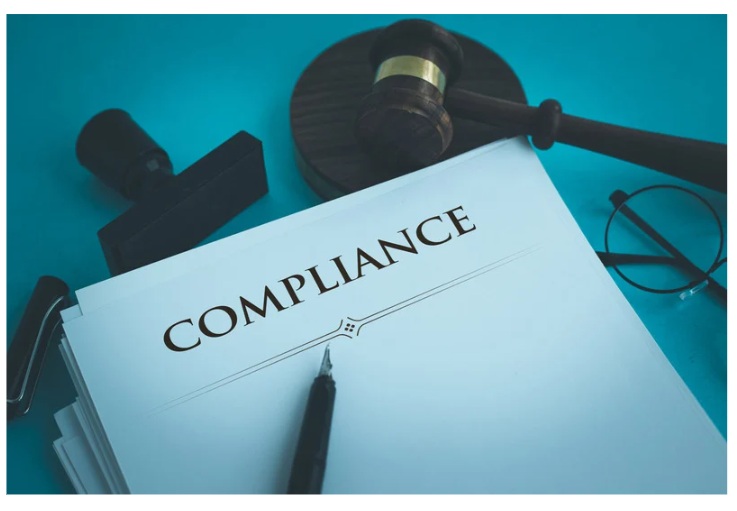
A GRC (Governance, Risk, Compliance) Checklist
In today’s complex and fast-paced business environment, organizations face a myriad of challenges related to Governance, Risk Management, and Compliance (GRC). These challenges can range from regulatory pressures and cybersecurity threats to ethical concerns and data privacy issues. To navigate this landscape effectively, businesses need a structured approach to GRC. This is where a GRC checklist comes into play. In this article, we will explore the importance of GRC and provide a comprehensive checklist to help organizations establish and maintain robust GRC practices.
The Significance of GRC
Governance, Risk, and Compliance (GRC) is a framework that helps organizations manage their operations, ensure regulatory compliance, and mitigate risks effectively. It involves establishing clear policies, processes, and controls to achieve business objectives while complying with laws, regulations, and ethical standards.
Here’s why GRC is vital for organizations:
- Risk Mitigation:
GRC enables organizations to identify, assess, and mitigate risks effectively. By proactively managing risks, businesses can avoid financial losses, reputational damage, and legal troubles. This not only protects the organization but also instills confidence in stakeholders.
- Regulatory Compliance:
In today’s global business landscape, compliance with various regulations and standards is a significant challenge. GRC provides a structured approach to ensure that an organization adheres to relevant laws and industry-specific requirements.
- Operational Efficiency:
A well-structured GRC framework streamlines processes and reduces redundancy. This, in turn, enhances operational efficiency, reduces costs, and improves overall performance.
- Enhanced Decision-Making:
With GRC in place, organizations have access to accurate and timely data related to their governance, risks, and compliance status. This data-driven approach empowers decision-makers to make informed choices that align with the organization’s goals.
The GRC Checklist
Implementing an effective GRC framework involves a multifaceted approach. The following checklist outlines key steps and considerations for organizations looking to establish or enhance their GRC practices:
- Define GRC Objectives and Scope:
Clearly define the goals and objectives of your GRC initiative.
Determine the scope of GRC activities, including the departments, processes, and regulations that will be covered.
- Identify Key Stakeholders:
Identify all relevant stakeholders, including executives, board members, department heads, and compliance officers.
Establish clear lines of communication and responsibility for GRC matters.
- Risk Assessment and Management:
Conduct a thorough risk assessment to identify potential risks to the organization.
Develop a risk management plan that outlines strategies for risk mitigation and risk transfer.
- Compliance Management:
Identify the relevant regulatory requirements and standards applicable to your organization.
Establish a compliance framework that includes policies, procedures, and controls to ensure adherence.
- Governance Structure:
Define the organizational structure for GRC, including roles and responsibilities.
Ensure there is a dedicated GRC team or officer responsible for overseeing GRC activities.
- Policies and Procedures:
Develop and document governance policies and procedures that align with your organization’s objectives.
Ensure that these policies are communicated to all employees and stakeholders.
- Technology and Tools:
Invest in GRC software and tools to streamline data collection, analysis, and reporting.
Ensure these tools support risk assessment, compliance tracking, and reporting requirements.
- Training and Awareness:
Provide GRC training to employees and stakeholders to ensure they understand their roles in the framework.
Promote a culture of compliance and risk awareness within the organization.
- Monitoring and Reporting:
Implement continuous monitoring of GRC activities, including real-time tracking of compliance and risk indicators.
Generate regular reports for management and stakeholders to keep them informed.
- Incident Response Plan:
Develop an incident response plan to address unforeseen events, breaches, or compliance violations.
Test and update this plan regularly to ensure effectiveness.
- Third-Party Risk Management:
Assess and monitor the risks associated with third-party vendors and partners.
Establish clear contractual agreements that outline compliance and security expectations.
- Data Privacy and Security:
Implement robust data privacy and security measures to protect sensitive information.
Comply with data protection regulations such as GDPR or HIPAA, as applicable.
- Ethical Standards:
Define and communicate ethical standards and codes of conduct for employees and stakeholders.
Establish mechanisms for reporting ethical concerns anonymously.
- Internal Audits and Reviews:
Conduct regular internal audits and reviews to assess the effectiveness of GRC processes.
Identify areas for improvement and implement necessary changes.
- Continuous Improvement:
GRC is not a one-time project but an ongoing process. Continuously assess and adapt your GRC framework to address evolving risks and regulatory changes.
- Communication and Transparency:
Foster open communication within the organization regarding GRC matters.
Be transparent with stakeholders about compliance status, risk exposure, and remediation efforts.
Conclusion
In today’s complex business environment, Governance, Risk, and Compliance (GRC) is not an option; it’s a necessity. Organizations must proactively manage risks, comply with regulations, and uphold ethical standards to thrive and protect their reputation. A well-structured GRC framework, supported by a comprehensive checklist, can help organizations achieve these objectives.
By following the steps outlined in this GRC checklist, organizations can establish a robust GRC framework that aligns with their objectives, ensures compliance, and effectively manages risks. Furthermore, a commitment to continuous improvement and a culture of transparency will enable organizations to adapt to changing circumstances and build trust with stakeholders.
In summary, GRC is not just a set of activities; it’s a strategic imperative that can safeguard an organization’s future in an increasingly complex and interconnected world.
Contact Cyber Defense Advisors to learn more about our Governance Risk Compliance (GRC) solutions.





